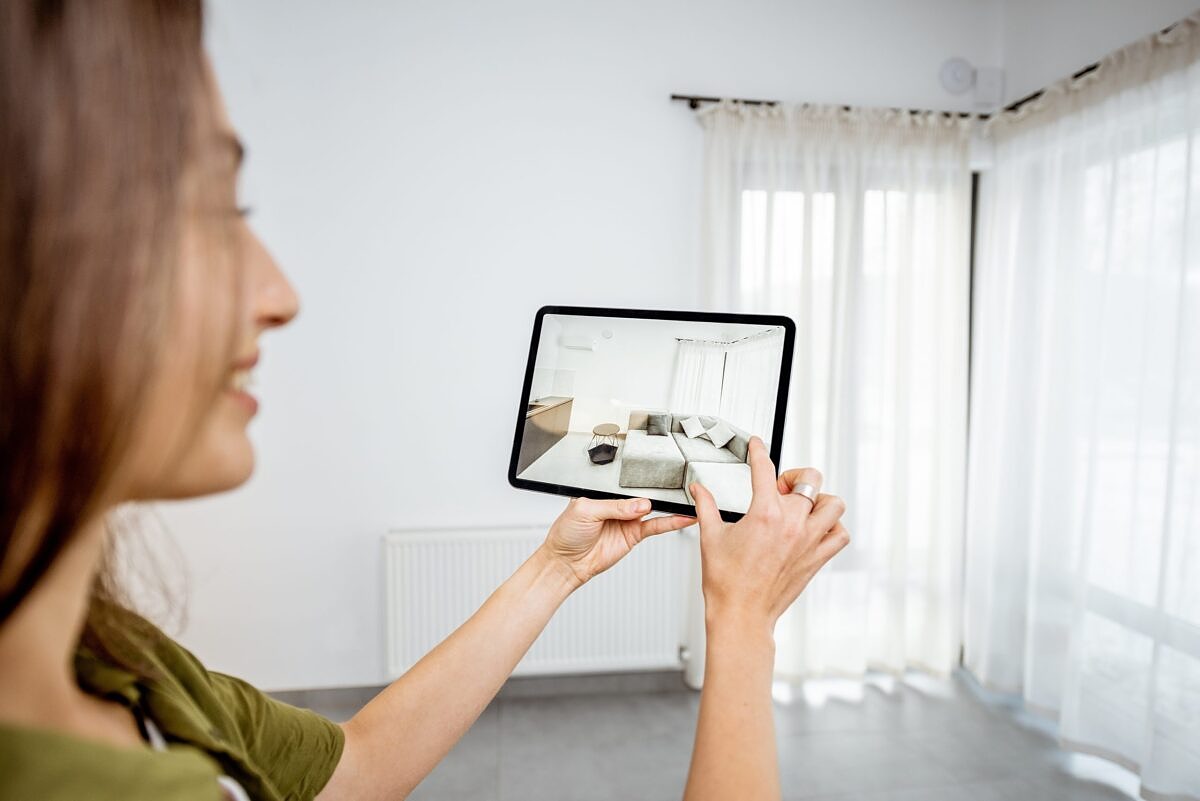Augmented reality in retail: growing customer interest due to corona
AR applications in shopping offer companies enormous potential that so far has hardly been tapped. However, the coronavirus crisis could accelerate the trend, with customer interest in augmented reality rapidly climbing in retail.

Augmented reality applications gaining ground thanks to their versatility
Augmented reality has been a major technology trend in numerous industries for years now. Whether for mobile game development, social media, navigation, or product development – integrating and visualizing virtual information and graphic elements in the real world via smartphones and other devices opens up a vast array of possibilities and is being actively used for an ever-greater number of purposes.
In the retail sector, too, AR applications are an interesting tool for improving the shopping experience and are therefore becoming increasingly prevalent. That said, augmented reality hasn’t had its big breakthrough in retail yet, despite the many advantages that AR brings to both e-commerce and brick-and-mortar sales.
Greater interest in AR applications for shopping being driven by corona
However, the ongoing coronavirus crisis could now give AR a much stronger boost when it comes to retail. As demonstrated by a recent survey conducted on more than 1,000 participants from Germany by the software comparison portal GetApp, there is a growing need for and interest in AR applications for shopping among consumers as a result of the coronavirus pandemic.
The focus of consumers here is a heightened demand for safety in that many regard the use of AR as an effective way of minimizing contact with others and thus the risk of being infected with the virus.
Keen interest in augmented reality in online retail
Although the GetApp study found that only 19 percent of respondents from Germany have used AR technology for their online shopping, the general interest is currently much greater because of the virus. In this respect, more than half of the survey participants in total were open to using augmented reality applications when shopping online in the future. Alongside consumers’ desire to make their own shopping experience safer, the authors of the study cited the following main reasons for the growing acceptance of AR in online retail:
- Simplified purchasing decisions (AR acts as a practical aid, for example by visualizing products in the desired setting)
- Greater choice of products compared to the range on display in-store
- More efficient shopping experience and quicker transactions
- Enjoyment of using new and innovative technologies
These aspects provide a multitude of opportunities in e-commerce for enriching online shopping with experiences that directly improve customer service and strengthen customer loyalty. For example, the ability to virtually inspect and test products reduces buying risks and consequently the risk of returns, thereby making online retail generally much more accessible and tangible for consumers.
AR in retail: not just limited to e-commerce
AR applications also offer a range of possibilities for improving the shopping experience in traditional in-store retail, for example by visually presenting additional product information that makes a purchasing decision easier. The use of augmented reality in in-store retail is still in its early days. However, the demand is there on the buyers’ side for augmented reality to be applied in a way that is beneficial – particularly when considering the restrictions brought about by the coronavirus pandemic. That fact is highlighted by the recent GetApp study, in which 52 percent of the survey participants from Germany were also interested in the use of AR technology in-store, contrasted with only 13 percent who have actually personally experienced AR apps or “AR mirrors” in-store.
AR mirrors as handy helpers in-store
Innovative AR mirrors open up attractive prospects for implementing augmented reality effectively in-store to give customers an experience. These mirrors let customers virtually try on and test products such as clothes and makeup – especially in corona times, that is a decisive advantage because it significantly reduces physical contact with goods as well as the use of dressing rooms. The option to try out lots of versions and models in a short space of time or even check out products that aren’t currently available in-store also makes for a better and more personalized shopping experience.
All in all, augmented reality is becoming increasingly relevant in retail
Gone are the times when augmented reality in retail was shrugged off as a gimmick. The trend has only just started to take off, though, both in technical terms and with regard to its prevalence. The rising interest in the use of AR applications among consumers speaks in favor of the technology making considerable gains in the near future. In this context, companies are above all strongly advised to transparently communicate about their privacy and data security measures in order to actively allay any concerns that their customers might have, for example before installing an AR app.





